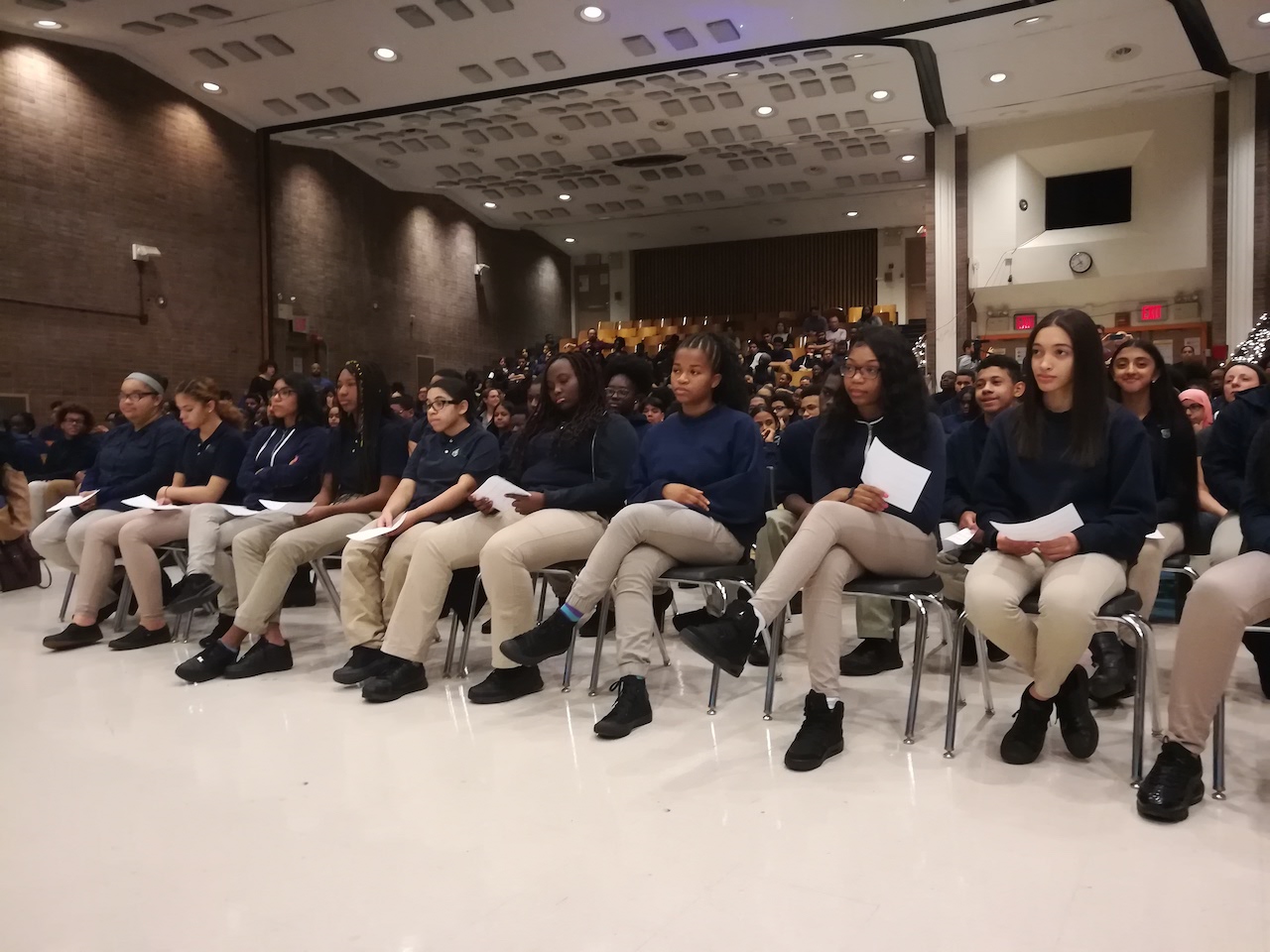
NASA astronaut Serena Auñón-Chancellor paid an unearthly visit to students at University Prep Charter High School on St. Ann’s Ave. when she Skyped in from the International Space Station to take their questions on Nov. 16.
“Being able to talk to astronauts up in space — that’s, like, a rare opportunity,” says Sarah Singh, 14, a sophomore at University Prep. “You know, we’re a school in the Bronx.”
The school’s 400 students, a mix of regular and mainstreamed special-needs students, waited with excitement for Auñón-Chancellor to literally appear from the sky in their large auditorium, then greeted her with a cheer. They have been working on an interdisciplinary project about how humans can colonize Mars, and had lined up many questions during their allotted 20 minutes.
“The number one science experiment going on here is yours truly and my other crewmates,” she told Jasmine Okeagu, a junior, and the spellbound audience. “What happens to the human body in space is fascinating.”
Heads and faces look a little puffier than they do on the ground because of fluid build-up, she explained, while bones and muscles begin to break down almost immediately, compelling astronauts to work out actively every day to counter the effect. However, “you don’t get that same rush of blood to your head when you go upside down,” she said, gracefully flipping her body to illustrate life in zero gravity.
“It doesn’t affect me,” she says. “My brain almost remodels itself to work in this environment,” teaching her how wonderfully adaptable the human body is.
When Uchenna Obumneme-Akaneme, a junior, asked how the astronauts replenish water and oxygen onboard, she told him they recycle everything. “Even urine — that we turn into tomorrow’s coffee — sweat and the condensate from my breath,” she said. Oxygen is created through electrolysis of water.
The educational event was part of a program called STEM on Station, which began in 2001. It is a collaboration between NASA and Teach for America, a nonprofit that takes resources to students in underserved communities.
Astronauts in the orbiting laboratory are in constant touch with NASA’s Mission Control Center in Houston, where Friday’s Skype downlink originated, Katherine Brown, a spokeswoman for NASA at the headquarters in Washington, said by e-mail.
“Today’s was the 275th education downlink since we started with Expedition 1, and the 56th for calendar year 2018,” Brown wrote.
Perhaps even more valuable was the real-life access to a scientist whose job has always fascinated young minds, but may seem unattainable for less privileged.
“I’m very much into mathematics,” says Heily Colberg, 14, a sophomore at the school. “Maybe this is something I would like to do, or maybe engineering.”
“I think it makes it real for them,” says Nicholas Schifano, a special education math teacher at the school, who coordinated the event.
They can learn about the International Space Station in textbooks, they can learn about NASA through the news and watching TV.
“But when they are interacting live with an astronaut doing flips, talking upside down,” he says, “they say, ‘Wow, this is this is something I could do.’ It just makes it possible.

